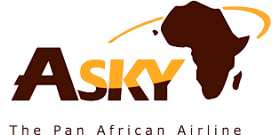 ASKY To Expand Network, Add African Codeshares
ASKY To Expand Network, Add African Codeshares
Togo-based ASKY is changing its network to fly more nonstop regional routes, ahead of the potential arrival of its first Boeing 787s in 2026, and the carrier is aiming to negotiate codeshares with four African airlines.
ASKY, which is part-owned by Ethiopian Airlines, currently serves 29 destinations across Africa with a fleet of 14 B737s.
Most of ASKY’s routes operate onward from one station to another. “We are trying to disentangle them,” ASKY Commercial Director Date Dovene Tevi-Benissan said. “We are trying to make them more direct.” This is because ASKY is planning to take a pair of 787s from 2026 to operate thicker intercontinental African routes, along with services to Europe and Asia. ASKY is therefore looking to operate more nonstop African regional flights to feed the 787s.
Conversely, when ASKY starts flying to Europe and Asia, Tevi-Benissan may look at fifth-freedom flights with a stopover as a way to minimize risk. He gave Lome-Cairo-Mumbai as a hypothetical example. “It could be less risky for us to enter the [Mumbai] market than going nonstop,” he said.
Operating larger aircraft like the 787 will also help ASKY maximize capacity on bilaterally restricted intra-African markets. “Where we cannot have more frequencies, it can be an option in terms of capacity.” In 2025, two 737-8s are scheduled to join the ASKY fleet. This additional capacity will be used to launch flights to the Mauritanian capital of Nouakchott. Tevi-Benissan is negotiating a Mauritania Airlines codeshare to support this new route, building on ASKY’s existing codeshares with Ethiopian Airlines and Kenya Airways.
Beyond this, Tevi-Benissan is also working to secure new codeshares with Gabon-based Afrijet, Air Senegal and Royal Air Maroc (RAM). This forms part of ASKY’s plans to expand in North and East Africa.
Tevi-Benissan said ASKY has West and Central Africa “fully covered,” but Nairobi, Kenya, is the airline’s only destination in East Africa. Meanwhile, in Southern Africa, ASKY flies to just two countries: Angola and South Africa.
ASKY is therefore evaluating potential new city pairs in East, North and Southern Africa.
In North Africa, Morocco has potential, particularly RAM’s home hub at Casablanca. Tevi-Benissan said ASKY unsuccessfully reached out to RAM over a possible partnership a few years ago. However, the two airlines are distributed by APG, and their relationship is “getting better,” making a codeshare more likely.
In East Africa, ASKY is evaluating Kigali, Rwanda, and Zanzibar, Tanzania, while Lusaka, Zambia, is under consideration in Southern Africa.
“In 2025, we are planning one destination [Nouakchott], maximum two. It will depend on whether we are able to secure the two aircraft [737 MAXs],” he said. “One of the destinations was planned for this year, but because of aircraft delivery delays, we had to push it to next year. If we are able to secure the two aircraft next year, probably we can go up to two destinations, but it will not go beyond two. It is quite expensive to expand in Africa, and developing routes is not easy.”
ASKY’s current fleet comprises a single 737-700, nine 737-800s and four 737-8s. On Dec. 27, ASKY will also phase out its final 737-700, which has been with the airline since its launch in 2010. This will be replaced by a 737-8.
In the future, ASKY might consider adding back some 737-700s for thinner routes, but Tevi-Benissan categorically ruled out smaller aircraft like the De Havilland Canada Dash 8. “[The Dash 8] is out of the question,” he said. “Nothing smaller than a 737.”
ASKY has aimed to add two aircraft and two destinations each year since its launch. “Opening stations in Africa is not easy. It needs a long period of development,” said Tevi-Benissan. The airline’s load factor is currently sitting at around 75%.
